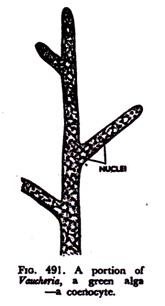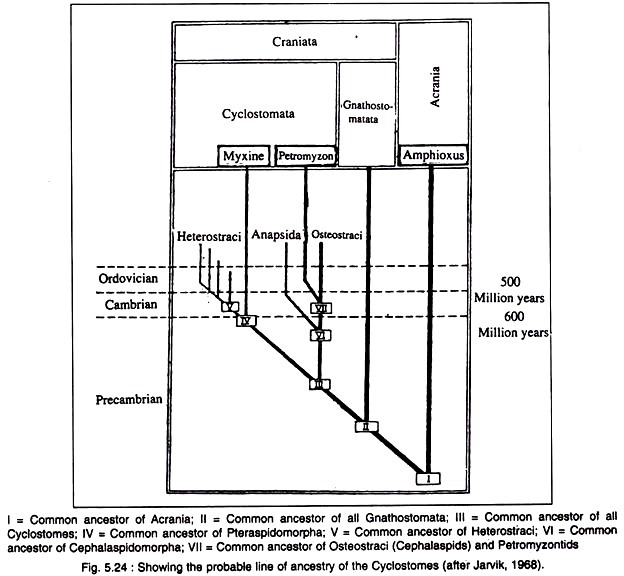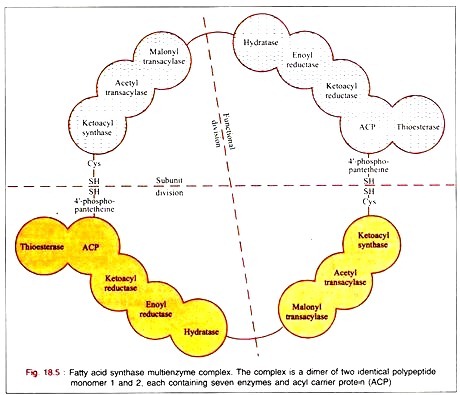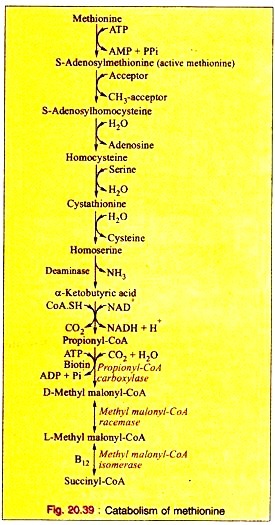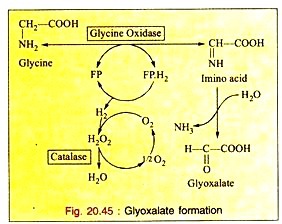In this notes we will discuss about:- 1. Nomenclature and Classification of Enzymes 2. Kinetics of Enzyme-Reactions 3. Enzyme Activity and Assay.
Contents
Notes # Nomenclature and Classification of Enzymes:
Before a scientific nomenclature of enzymes was developed, they were given trivial names, like pepsin, trypsin, rennin, ptyaline etc. Later, a more logical system of nomenclature was adopted by adding the suffixase to the substrate, like maltase, sucrase, protease, lipase etc.
Still later, in 1961, the Commission on Enzymes of the International Union of Biochemists recommended a scientific approach of naming and classifying enzymes. Accordingly, each enzyme has been allotted a trivial name and a scientific name. Thus, the enzyme catalyzing oxidation of lactic acid to pyruvic acid bears the trivial name — lactate dehydrogenase, abbreviated as LDH, and a scientific name — lactate: NAD oxidoreductase.
The commission recommended classifying enzymes into six major classes:
1. Oxidoreductases,
2. Transferases,
3. Hydrolases,
4. Lyases,
5. Isomerases, and
6. Ligases.
Each major class has been divided into groups according to the chemical bonds acted upon by the enzymes.
An outline of the classification with examples are presented in Table 8.2:
Oxido-Reductases catalyse transfer of hydrogen, electrons or oxygen using FAD, NAD, NADP or cytochromes as acceptor.
Some examples are provided:
Transferases are involved in group transfer reactions, such as transfer of methI, formyI, amino and CarboxyI groups from a donor to an acceptor molecule.
A few examples are cited:
Hydroilases catalyse cleavage of disaccharides, polysaccharides, esters, polypeptides, nucleosides etc. by addition of water.
Some common examples are maltase, amylase, pepsin, lopase, etc.:
Lyases cause non-hydrolytic cleavage of substrates.
Examples of this class are pyruvate decarboxylase, aldolase, fumarase etc.:
Isomerases catalyse conversion of a substrate to its isomer which has the same empirical formula but differs in molecular structure.
Examples of this class are triose phosphate isomerase, glucose phosphate isomerase, ribulose phosphate epimerase etc.:
Liagases catalyse formation of bonds between two compounds.
Examples of this class are amino acid-RNA ligase, acetyI-CoA carboxylase, DNA ligase etc.:
Notes # Kinetics of Enzyme-Reactions: Michaelis-Menten Equation:
An enzyme-catalysed reaction differs from an ordinary chemical reaction in an important way. The velocity of an enzyme reaction increases with increase in the concentration of the substrate only up to a limit till it reaches a stage when the enzyme present in the reaction mixture is saturated with the substrate. Further increase in substrate concentration beyond this limit does not result in an increase of the velocity.
This can be demonstrated when the velocity is plotted against substrate concentration as shown in Fig. 8.26:
From the curve shown in Fig. 8.26., it is observed that at low substrate concentration, the rate of enzyme reaction (v) — which is measured generally by the quantity of product formed per unit time — is proportional to the substrate concentration [S], Under these conditions, the reaction shows the characteristics of a first-order reaction.
A first-order reaction is one which proceeds at a rate proportional to the concentration of one of the reactants; here the reactant is the substrate. As the substrate concentration is increased in the enzyme reaction mixture, the velocity of the reaction decreases and, with further increase, the velocity reaches its maximum (Vmax) and it remains constant. Under this condition, the reaction assumes the zero-order i.e. the velocity becomes independent of the substrate concentration.
The behaviour of enzyme-catalysed reactions in respect of substrate concentration and the saturation effect led L. Michaelis and M. L. Menten to formulate a general theory of kinetics of enzyme reactions. According to this theory, the enzyme (E) reacts with its substrate (S) to form an enzyme- substrate complex (ES) which then breaks into the enzyme and the product (P). Both reactions are reversible and the rate constants for the first reaction are K1 and K2 and those for the second reaction are K3 and K4 as represented next.
When the rate of formation of ES is equal to the rate of its break-down, and the ES concentration remains constant, then,
By rearrangement of the above equation, the following relation is obtained:
If the rate of reaction is now brought under consideration, the initial velocity (v) is proportional to the rate of break-down of ES complex as seen in fig. 8.26, or v = K3[ES].When the substrate concentration is so high that all the enzyme is present as ES i.e. no free E is present, the maximum velocity Vmax is reached. Then Vmax = K3 [E], where E represents the total enzyme, all of which is present as ES.
The equation defines the relation between the velocity of an enzyme reaction and the substrate concentration, if Vmax and Km are known. The equation also shows that when v = Vmax/2, then-Km = [S], In other words, Km is equal to the substrate concentration at which the velocity is half-maximal.
The Michaelis-Menten constant, Km, is an important parameter of an enzyme, because it shows the affinity of an enzyme to the substrate. The smaller the value of Km, greater is the affinity between the two. Km is expressed in moles per litre and it can be determined experimentally by gradually increasing the substrate concentration and measuring the concentration of product formed.
However, from the type of plot shown in Fig. 8.26., it is not possible to determine accurately the value of Km, because the increase in velocity, as it approaches Vmax, becomes so slow that it is not possible to determine with certainty the substrate concentration at which Vmax is reached.
A more accurate method of determination of Km was developed by Lineweaver and Burke who plotted the reciprocals of v and [S] i.e. 1/v and 1/[S], This produces a straight line with a slope of Kn/Vmax. The intercept on the abscissa gives the value of -(1/Km) from which Km can be calculated accurately (Fig. 8.27).
The Km values of most enzymes lie between 10-2 to 10-5 moles of substrate per litre. It should be noted that the quantity o/ the enzyme in the reaction mixture is kept constant and only the substrate concentration is varied i.e. gradually increased to determine the Michaelis-Menten constant.
Notes # Enzyme Activity and Assay:
The activity of an enzyme is usually estimated in cell-free extract. Quantitative estimation of an enzyme is known as enzyme assay. One unit of enzyme activity is defined as that amount which transforms one micromole (1 μ mole) of the substrate per minute a 25°C under otherwise optimal conditions. These conditions include optimum pH, buffer, coenzymes, cofactors etc.
It is evident that if a cell-free extract is used as enzyme without purification, the amount of extract to transform 1μmole of substrate per minute would be more than a purified enzyme, because the extract contains many other enzymes and proteins which do not act on the particular substrate chosen for assay.
The purity of an enzyme preparation is indicated by its specific activity which is defined by the number of units of enzyme activity per mg protein of the enzyme preparation. Specific activity is low in cell-free extracts and in less purified preparations and it increases with purification of the preparation, reaching a maximum — when the enzyme preparation is homogeneous, i.e. it contains no other protein except the enzyme protein.
Another important property of an enzyme is the ability of a single enzyme molecule to convert the number of substrate molecules to product per unit time. This is known as the turnover number. Some enzymes by nature are more active than others and their turnover number is high.
The turnover number is calculated on the basis of pure enzyme with known molecular weight and known specific activity. Most enzymes have turnover numbers lying between few thousand to ten thousand, or so. But some others, like catalase or acetylcholine esterase have turnover numbers of 5 to 18 millions per minute.
The activity of an enzyme is governed also by several other factors among which the most important are H+-concentration and temperature. Most enzymes can function effectively within a certain range of pH and temperature. The point where an enzyme shows its maximum activity is called its optimum pH or optimum temperature.
Most enzymes show maximum activity at about neutral pH, but there are also exceptions, e.g. pepsin, a proteolytic enzyme secreted in the stomach, has an optimum at pH 1.5, while another proteolytic enzyme, trypsin, secreted in the intestines, has an optimum pH of 9.0.
Although, for most enzymes, the pH-activity curve has a bell-shape (Fig. 8.28A), some enzymes like sucrase (invertase) shows uniform activity over a pH range of 3.0 to 7.5. The H+-concentration presumably affects the dissociation of ionizable groups in the active centre of the enzyme protein molecules.
Temperature is another external factor which affects the rate of enzyme reactions, just as it affects ordinary chemical reactions. Usually the rate of reaction doubles with a rise of every 10°C. But in case of enzyme reactions, this happens within certain limits, because most enzymes are denatured at a temperature of 40°C to 50°C.
Beyond this limit the rate of reaction falls off sharply (Fig. 8.28 B):
The type of responses to pH and temperature shown in Fig. 8.28 holds good for common enzymes. But enzymes isolated from extremophile organisms, like acidophilic, alkalophilic or thermophilic organisms, may exhibit quite different response patterns. For example, the DNA-polymerase of a thermophilic organism, Thermus aquaticus, is quite stable at a temperature exceeding 90°C.
Quantitative estimation of the amount of enzyme present either in intact cells or their extract is known as enzyme assay. For assaying an enzyme in cell or tissue extract — or after the enzyme is purified and taken in solution — it is essential to know the substrate it acts upon, the cofactors or coenzymes necessary for the reaction and its optimum pH and temperature.
The test solution contains the enzyme in a suitable buffer having the required pH, the cofactors, or coenzymes, and the substrate at a concentration which is sufficient to ensure the maximal velocity of reaction from the beginning.
The most important point in an enzyme assay is to adopt an accurate analytical method to quantitatively estimate either the substrate or the product. The gradual disappearance of the substrate, or the appearance of the product measured at definite time intervals, indicates the progress of the enzyme reaction. The results are usually expressed in μmoles/min/mg protein.
A very convenient method of assay of many dehydrogenases requiring NAD/NADH2 or NADP/NADPH2 as coenzymes is the so called optical test. While these coenzymes are reduced by a substrate, the positively charged nicotinamide moiety loses its positive charge and the aromatic nature of the pyridine ring is lost. As a result, an absorption peak at 340 nm appears which is absent in the oxidized form (Fig. 8.29). This change can be utilized for assay of dehydrogenases, using NAD/NADP as H-acceptor.
